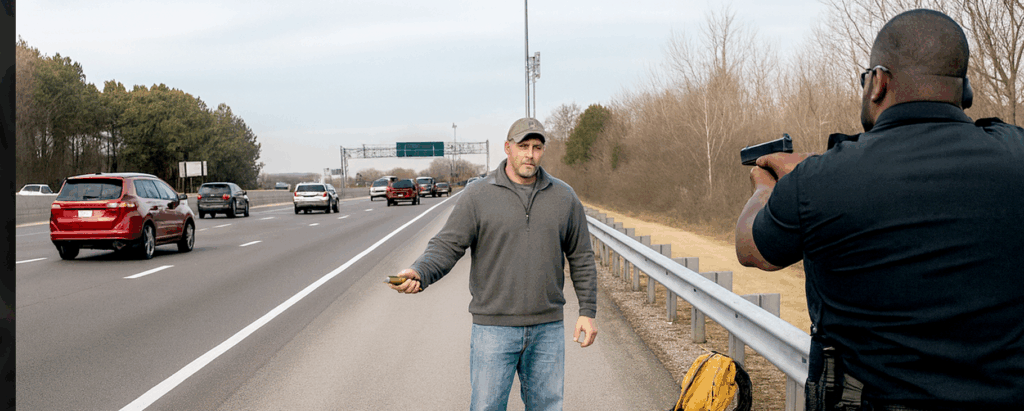Estate of Parker v. Mississippi Department of Public Safety, 2025 WL 1603809 (5th Cir. 2025)
Eric Smith kidnapped his three-month-old son, La’Mello Parker, after murdering La’Mello’s mother and another person in Gulfport, Louisiana. Smith fled in his car, holding La’Mello tightly to his chest. Smith led officers on a prolonged chase down I-10, crossing from Louisiana into Mississippi, where he fired his first shot at officers. The chase continued until a Harris County deputy forced Smith’s vehicle into the median. Smith rolled down his driver-side window and fired at an officer who was not behind cover. Multiple officers immediately returned fire, killing Smith. La’Mello was also fatally hit by a bullet. La’Mello’s grandfather and brother sued various law enforcement agencies and officers, claiming they had violated La’Mello’s constitutional rights.
The trial court applied qualified immunity to all claims against the officers and dismissed the complaint. The trial court ruled “it was not excessive for the deputy to use his patrol car to stop Smith, or for officers to fire their service weapons to defend against and subdue Smith, a murderer who had just fired first at law enforcement.” Finally, the trial court ruled the officers’ returning fire “at an armed and dangerous suspect did not shock the conscience” in violation of the 14th Amendment.
On appeal, the 5th Circuit Court of Appeals upheld the trial court’s dismissal, holding the officers did not violate La’Mello’s constitutional rights because their use of force was reasonable.
For a plaintiff to succeed on an excessive force claim, the plaintiff must show both that a seizure occurred, and the force used to effect the seizure was unreasonable. In Brower v. County of Inyo (489 U.S. 593 (1989)), the Supreme Court defined a Fourth Amendment seizure as “when there is a governmental termination of freedom of movement through means intentionally applied.” Courts have yet to decide whether a seizure occurs when an officer targets force on a suspect, but the force impacts an innocent party. For purposes of this case, all parties conceded a seizure had occurred. Thus, the critical question was whether the force — multiple officers firing at Smith while he used his infant son as a human shield — was reasonable.
The appellate court recited the common approach for assessing the reasonableness of force. First, the court recited the Graham factors: (1) “the severity of the crime at issue,” (2) “whether the suspect poses an immediate threat to the safety of the officers or others,” and (3) “whether he is actively resisting arrest or attempting to evade arrest by flight” (Graham v. Connor, 490 U.S. 386 (1989)). Next, the court recited the rule that it assesses reasonableness “from the perspective of a reasonable officer on the scene, rather than with the 20/20 vision of hindsight.” The court is “rightly hesitant to second-guess a police officer’s assessment, made on the scene, of the danger presented by a particular situation from the calm remove of chambers.”
The court held officers had good cause to believe that Smith posed “a clear and immediate threat to the safety of officers and the surrounding public” because he had just murdered two people, repeatedly fired at officers and abducted his infant son: “Smith was actively evading arrest — fleeing and firing at law enforcement.” But should the Graham factors be set aside in this unusual case because Smith chose to hide behind his infant son while shooting at police?
The court answered that difficult question in the negative: “The tragic facts of this case make our conclusion difficult. We do not and cannot condone the shooting of an innocent child by law enforcement. But the law requires us to assess reasonableness from the vantage of a reasonable officer on the scene — not with the clarity of 20/20 hindsight. And from that perspective, we cannot deem it unreasonable for officers to return fire at an active shooter who had endangered both them and the public — even if, tragically, the shooter used an innocent child as a shield.”



